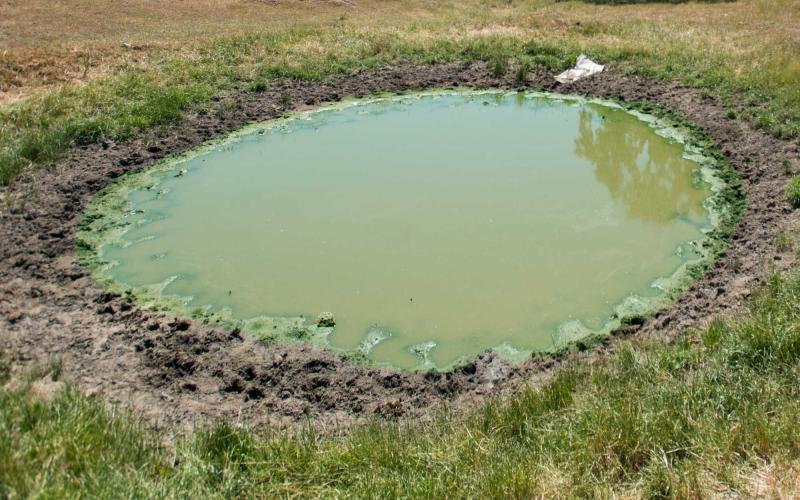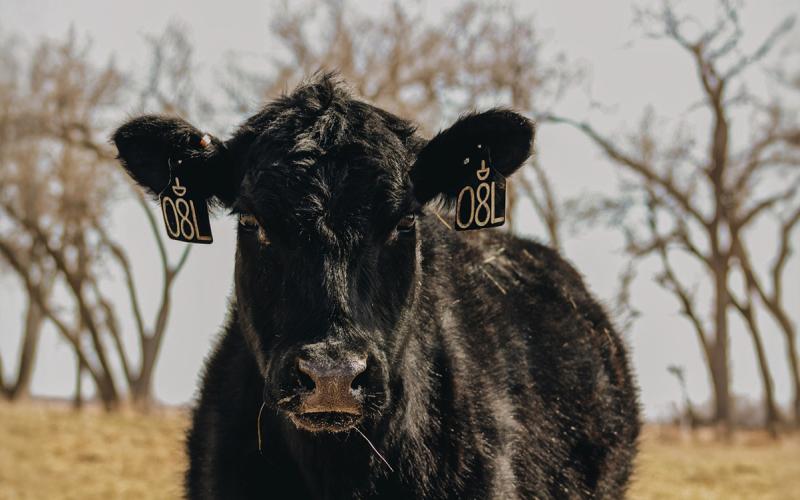
Originally written by Adele Harty, former SDSU Extension Cow/Calf Field Specialist.
With the expanding drought conditions across Western South Dakota, there are increased concerns about livestock water quality. One water quality concern stems from the algae blooms on stock dams. The predominant question is whether the algae presents health concerns for livestock. Depending on the type of algae, it can be a concern. With warmer temperatures, the conditions are right for blue-green algae blooms.
About Blue-Green Algae
Blue-green algae does not look like traditional green algae, which typically forms in a mat on the surface of the water. Rather it can appear like small grains of green sand at the water surface. There are different types of blue-green algae that have varying appearances. Some may resemble spilled paint around the edge of the stock dam, some will give the entire water source a pea-green appearance, while others will have a teal green appearance. Different species of blue-green algae contain various toxins, which can poison livestock, resulting in rapid death.
Blue-green algae will bloom when weather is hot and winds are calm. As the algae begin to die, gas is produced in the cells causing the colonies to float to the water surface. The wind blows the algae blooms to the shorelines resulting in their concentration and easy access to livestock. Identification of blue-green algae blooms in water can be difficult because the blooms appear and disappear rapidly.
Livestock Toxicity
Blue-green algae blooms can contain neurotoxins (nervous system damage) or hepatotoxins (liver damage), depending on the type that is present. If water containing blue-green algae is consumed by livestock, death will typically occur within 24 hours or less following ingestion. Cattle, sheep, horses and small animals are all susceptible to these toxins (and humans!). Due to the rapid advancement to death, the observation of clinical signs including tremors, paralysis, respiratory failure, and diarrhea are not often seen. The most frequent indicator of toxicity from blue-green algae is to find a dead animal close to the contaminated water. If the animal survives initial poisoning, photosensitization (sunburn) will be noticeable, however the animal will likely die later due to liver failure. There is not a standard treatment for blue-green algae toxicity due to the rapid progression to death.
Sampling and Testing
If you suspect that you have lost livestock to blue-green algae toxicity, work with your veterinarian to collect the appropriate samples to confirm or deny the blue-green algae toxicity. A complete set of tissues (liver, brain, stomach contents) and a water sample are needed for diagnosis. The water sample should be taken from areas within the stock dam where the algae is concentrated. This video from Kansas State Veterinary Diagnostic Laboratory describes what blue-green algae can look like on the dam and how to collect water samples. The samples can be submitted to the Kansas State Veterinary Diagnostic Laboratory for analysis. This lab can test for the presence of blue-green algae along with specific toxins.
Management Considerations
The only sure way to prevent blue-green algae poisoning is to remove animals from contaminated water. Move them to a pasture with a water source free of blue-green algae. If this is not possible, control access to the dam, especially in areas downwind, which is where the concentration occurs. Pump water from below the surface in the middle of the stock dam to a holding tank so that the scum on the top can be avoided.
If you suspect a blue-green algae bloom in your stock dam, the first priority is to move the livestock to a clean water source and then send samples of the water to a lab for analysis.


